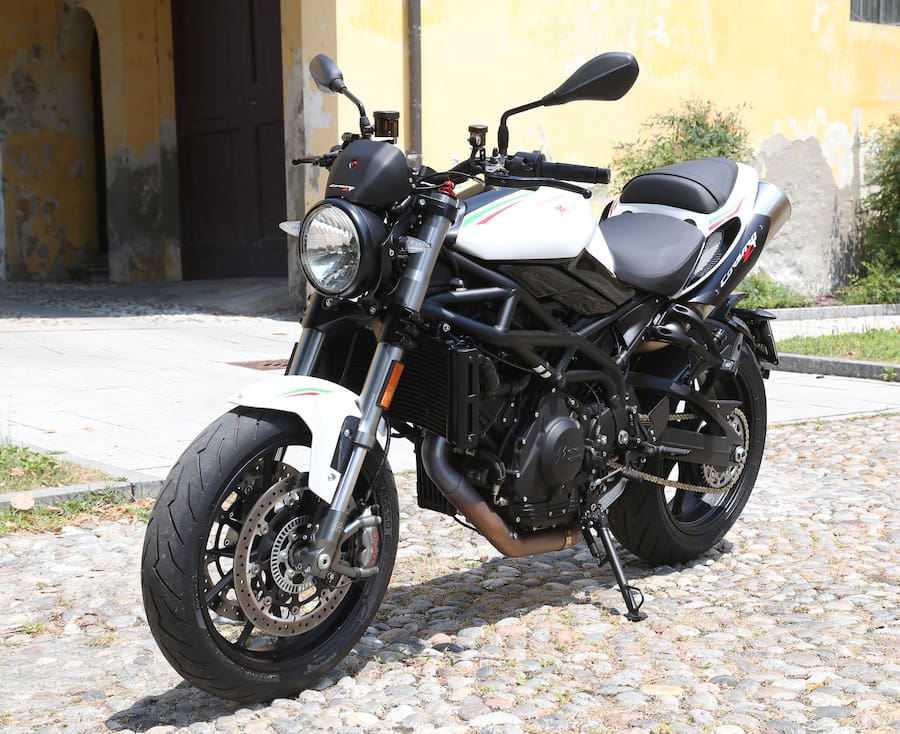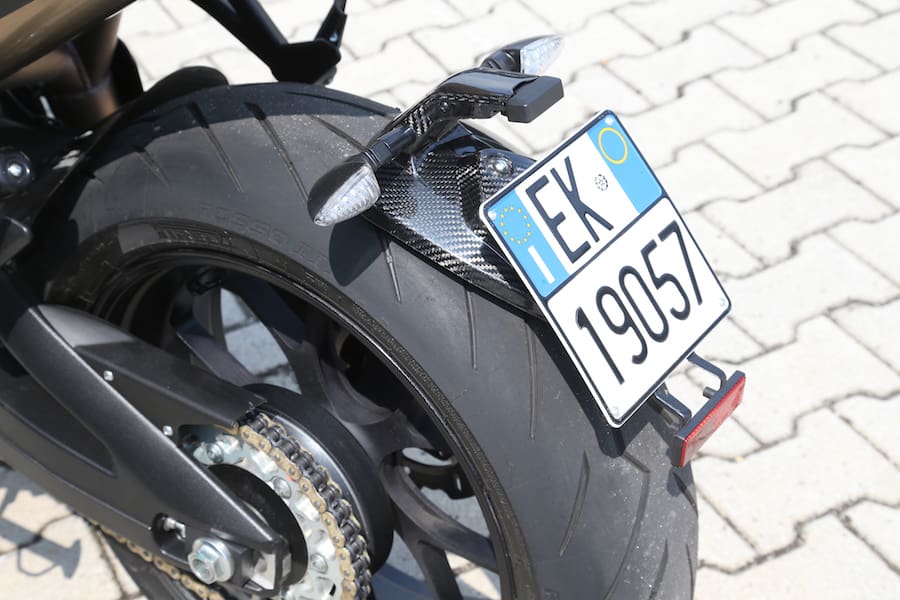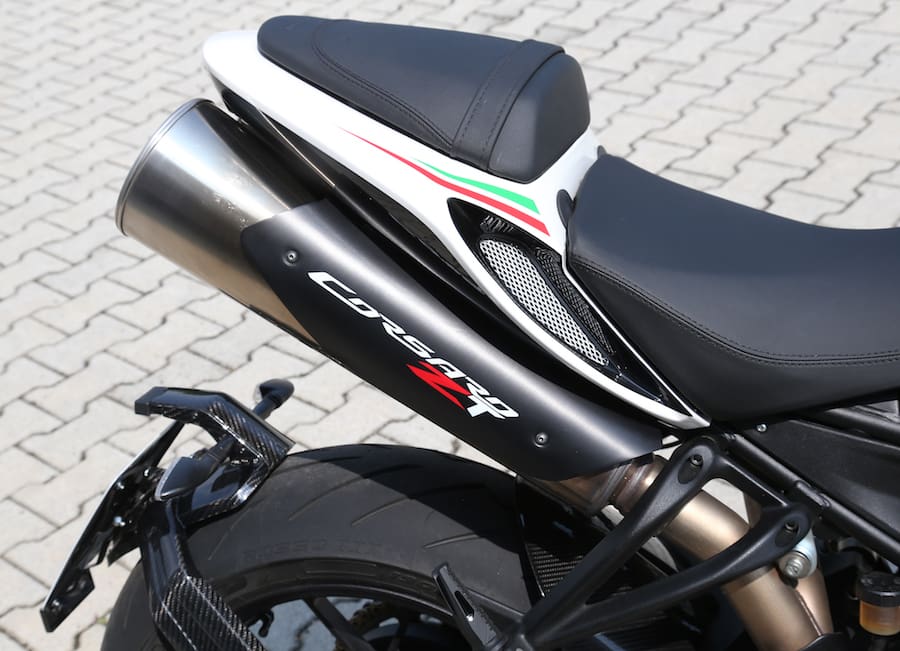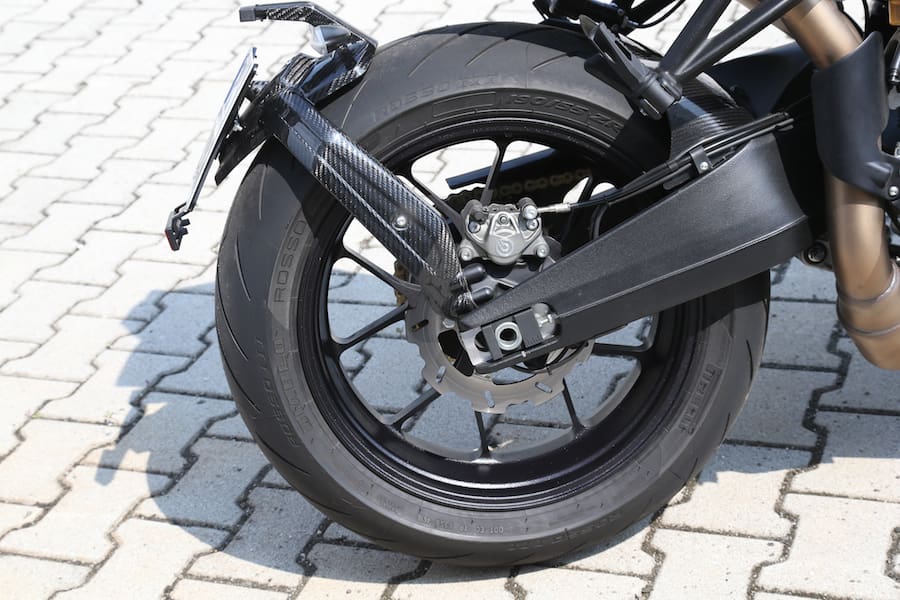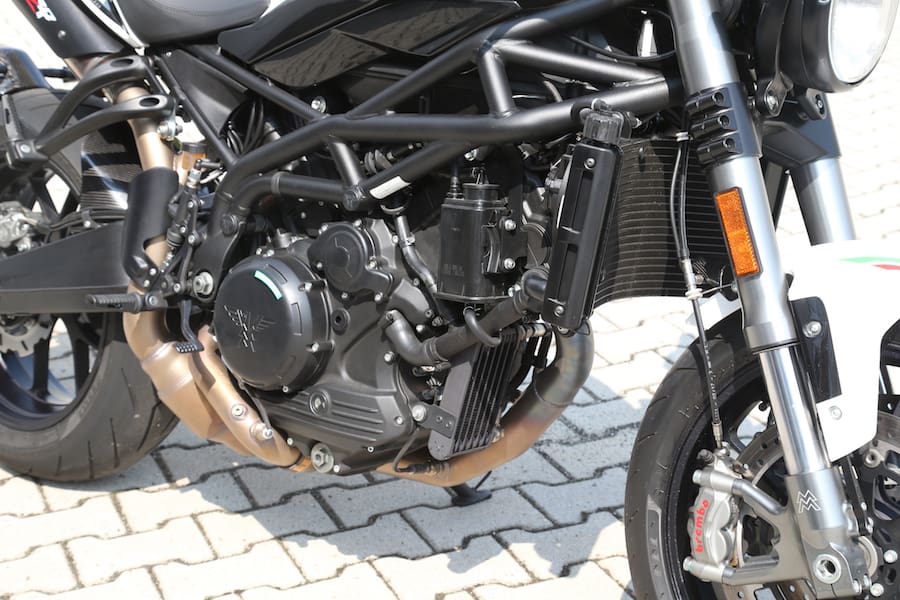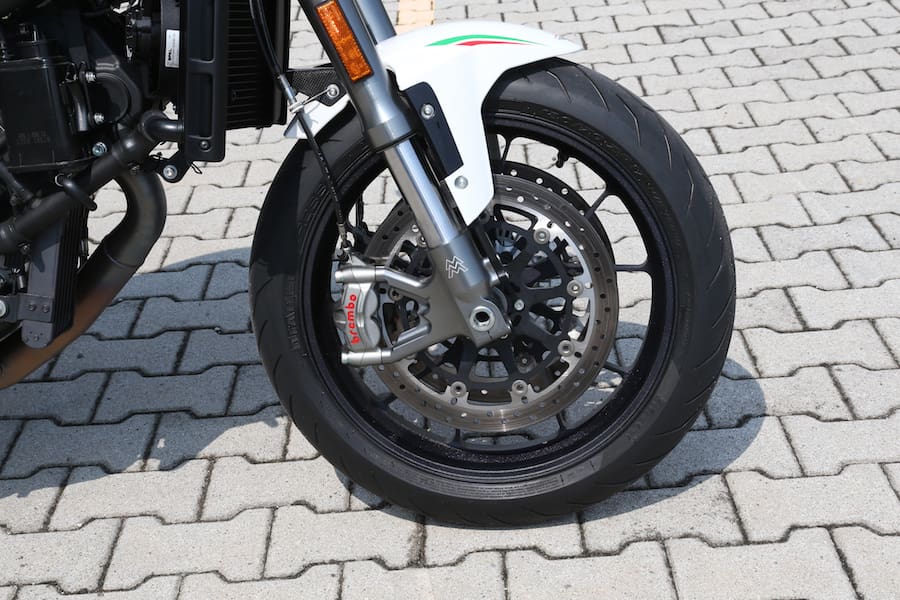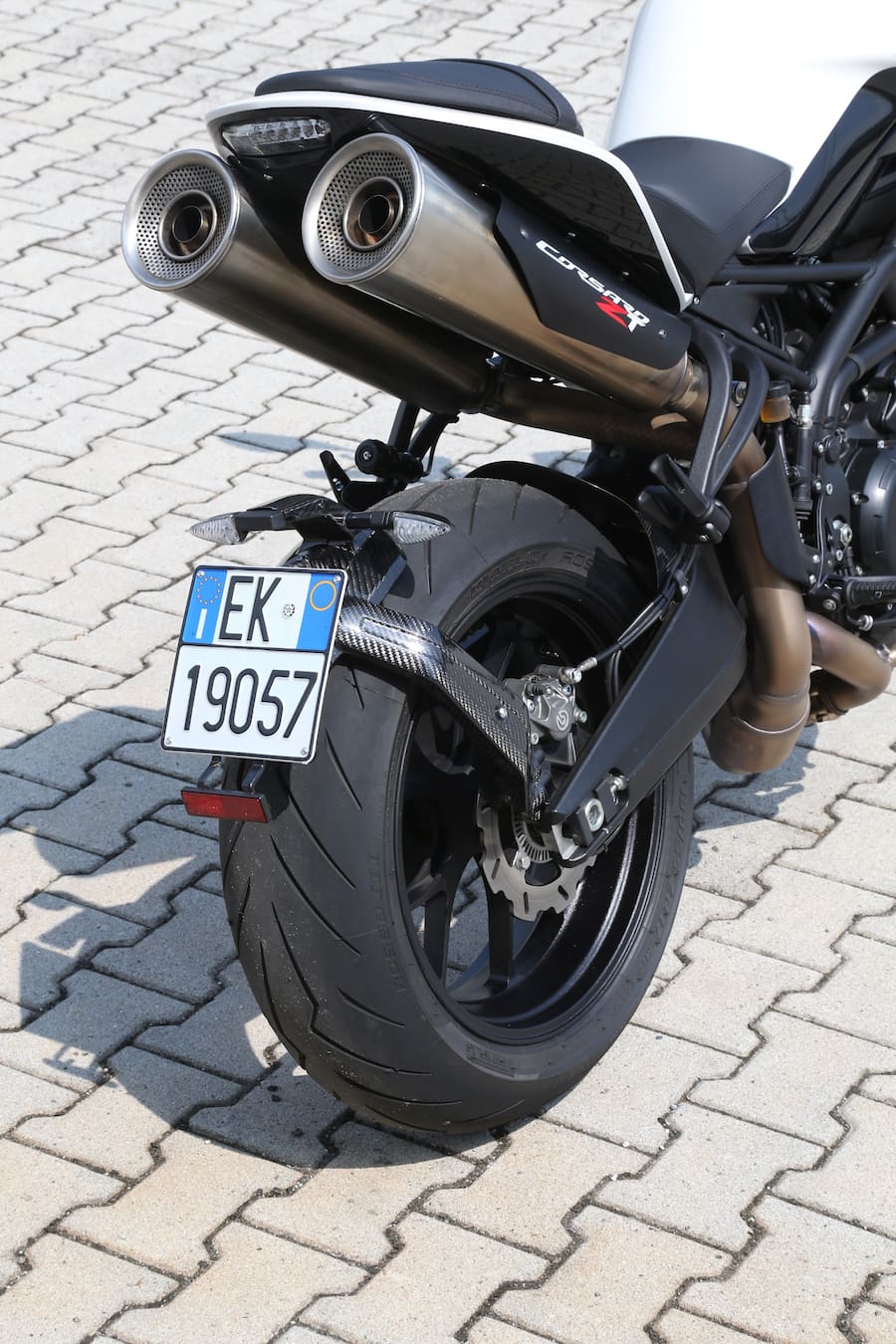Italy’s small but historic Moto Morini brand is continuing its steady ride along the comeback trail under the sole ownership of 57-year-old Milan-based investor Ruggeromassimo Jannuzzelli.
The 13 full-time employees at its small but well-equipped factory in the risotto rice fields south of Milan, produced 140 hand-built motorcycles in the whole of 2017, but this year they have delivered more than 100 bikes in the first six months, each powered by the unique 1187cc 87º V-twin CorsaCorta engine.
These comprise mainly the latest ZZ and ZT variants of the Corsaro streetfighter, the company’s core model, which entered production in 2006 and later spawned a family of spin-off models including the Granpasso adventure tourer and the Scrambler – well, street scrambler – which, like the Corsaro duo, are also now Euro 4-compliant.
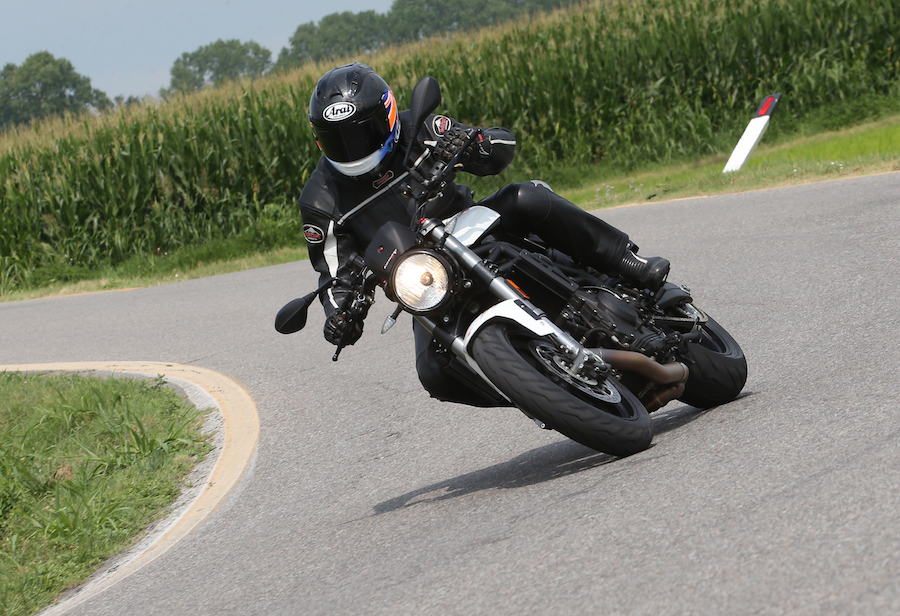
To fuel Moto Morini’s resurgence, Jannuzzelli has invested substantially in both product and personnel, introducing four new models in just two years while still focusing on the made-to-measure nature of the company’s creations.
“We are the only manufacturer in the world which assembles our complete motorcycle, engine and chassis, entirely by hand in-house,” Jannuzzelli says proudly. “We don’t purchase engines from someone else and install them in our frames – everything in the entire Moto Morini motorcycle is created here in Trivolzio, and each bike is assembled by a single person, whose name is attached to it.
“Our objective is to raise production to never more than 400 bikes a year by 2020, each of them hand-assembled to the highest standards of quality.

“And we are now selling our products through dealers established in each country, and no longer on the internet, as was the case before.”
This commitment to the cause has entailed spending the money needed to upgrade the Corsaro to Euro 4 compliance, while also refining and refreshing its looks via detail changes courtesy of noted designer Rodolfo Frascoli.
The first fruits of this was the Corsaro 1200 ZZ performance model launched at the 2016 EICMA Show, ABS-equipped for the first time and fitted with twin ellipsoidal headlights, and selling in Italy for 19,990 Euro, including tax. This has now been joined by the less-costly ZT variant that debuted at EICMA last November, and has now been in production since May, with 60 examples already delivered. This retails in Italy for 15,900 Euro and, while the exact same mechanical package as the ZZ, it’s been significantly revamped to deliver a more user-friendly machine that is certainly almost as good as its ZZ sister – in some ways a little better.
As regular readers will know, I’m a Morinista by conviction, as the satisfied owner of an original Corsaro 1200 that’s still just as much fun to ride as it was when I rode it home from Bologna to Britain in the summer of 2007. So I was particularly interested in evaluating the 1200 ZT, because this is intended to be a more rideable version of the decidedly muscular and relatively imposing ZZ streetrod. The difference comes not only in revamped fuelling for the CorsaCorta motor, but also in subtle changes to the riding position and the overall architecture of the bike – all aimed at delivering a more friendly motorcycle to ride, while retaining the same muscular appeal as the ZZ for the simple reason that the two bikes share the same mechanical package. Only the ECU mapping has been altered.
The most notable aesthetic change on the ZT is its smaller 14-litre fuel tank, now made in plastic rather than the ZZ’s larger 19-litre aluminium item. The two weigh the same, but have a quite different shape, with the ZT’s being a more compact and especially both slimmer and lower receptacle. With the same tall 860mm-high seat, this allows you to put your feet on the ground more easily. This, combined with taller, wider grips than on the ZZ, deliver a more relaxed yet upright riding stance, which carries over into the way you ride the bike, even if the frame geometry is unchanged.
The smaller tank ought to make more of a visual feature out of the good-looking CorsaCorta engine, but thanks to the fact that this is entirely smothered in black paint, it’s completely anonymous – especially since the ZT’s frame is also painted black.
Frankly, the ZT is an aesthetic own goal for Moto Morini – if they’d only left the engine castings unpainted, as on the ZZ I rode a year ago, or painted the frame red, as on some versions of the ZZ, it would look heaps better instead of just fading into the background.
The ZT’s round headlamp, which replaces the ZZ’s twin ellipsoidal affair, has a classic appearance that is in keeping with the bike’s more usable, everyday nature. The ZT still has a few carbon-fibre parts scattered around it, like the very distinctive rear numberplate holder, and the bike as a whole is a claimed six kilos lighter than before, at 190kg (kerb).
A key addition to Moto Morini’s technical team has been Massimo Gustato, who was hired in 2015 by Jannuzzelli as R&D manager, a role he previously held with Bimota, where he was responsible for putting an array of bikes into small-scale production, from the DBX Supermoto to the BMW-powered BB3.
Before that, he spent four years working for Aprilia Racing on the world title-winning RSW125/250 GP racers and RSV4 Superbike, so this is a man who knows how to develop small-volume models cost-effectively without sacrificing the quality coupled with individuality that is a small manufacturer’s USP.
Gustato is responsible for the remarkable achievement of actually gaining power and torque in making the Corsaro motor Euro 4 compliant.
In this guise, it delivers 137bhp (102.5kW) at 8500rpm – a claimed seven horsepower more than the previous Euro 3 version – and has 125Nm of torque on tap at 6250rpm. That’s 3Nm more than before, and the complete reverse of what other manufacturers have experienced. In every other case that I’m aware of, meeting Euro 4 with existing models has meant sacrificing outright performance in favour of increased torque – either that, or cubing up the motor to increase capacity in order to compensate for lost peak power. And compared to my older Euro 3 Morini 1200 with identical engine architecture, there’s a really noticeable improvement on the ZT when actually riding it, not just on paper.
While sharing those same impressive absolute numbers with the ZZ, the Corsaro ZT’s ECU has been completely remapped to deliver a wider spread of power, and especially torque, than with the Magneti Marelli electronics used previously.
“After one year of experience with this engine management system on the CorsaCorta motor, the ECU of the ZT has been improved by our calibration expert to deliver a more fluid power output from the engine,” Gustato says.
“We also have a very effective new exhaust system from our supplier. Our intention is to offer a bike that’s more comfortable for daily use or touring, while retaining the ZZ version for absolute performance.”
At a glance
Fuel tank
The Corsaro ZZ features a larger 19-litre fuel tank compared with the ZT on the right, which has a 14-litre capacity. The tank is also made of aluminium while the ZT’s is plastic, but they weigh the same.
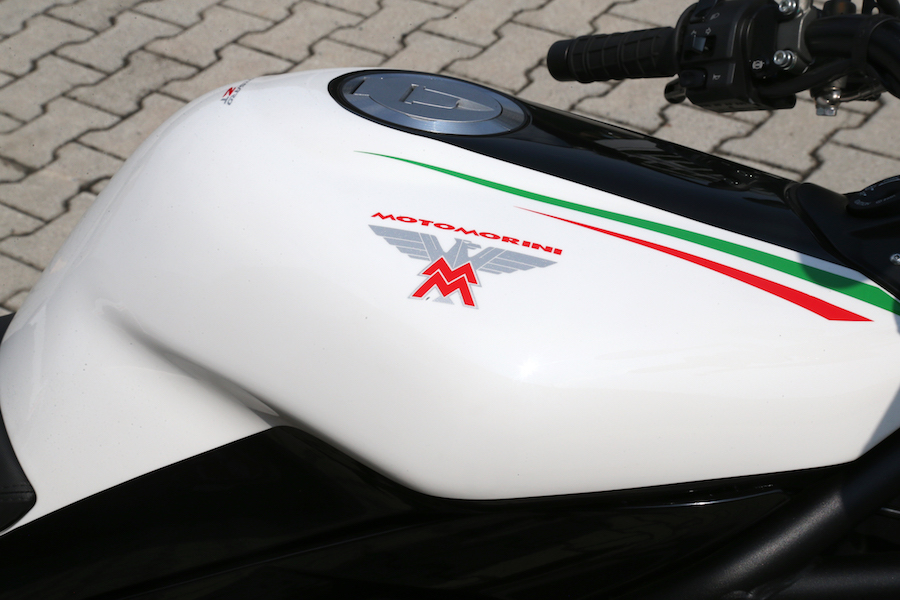
Power Boost
Moto Morini has achieved the unusual by getting more power and torque out of the engine in the process of meeting Euro 4 compliance. The V-twin has 5kW and 3Nm more than the Euro 3 model from the same 1187cc capacity.

Exhaust
Although the more user-friendly ZT has the same twin megaphone-shaped underseat exhaust design as the sportier ZZ, tech boss Massimo Gustato says a new exhaust was developed specifically for this bike.
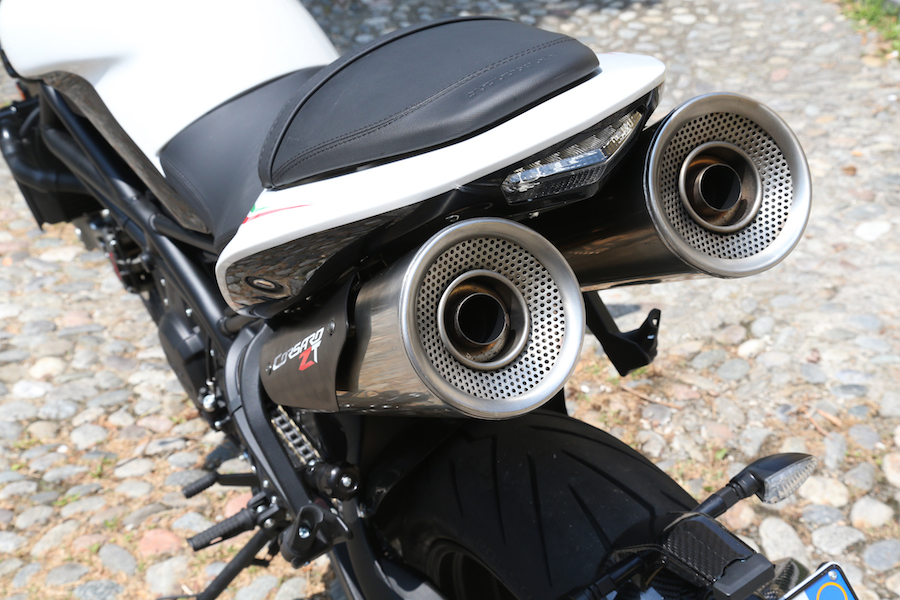
Handlebar
A reshaped one-piece handlebar with taller and wider grips than on the ZZ, combined with the same quite tall 860mm-high
seat, delivers a more relaxed yet upright riding stance on the ZT
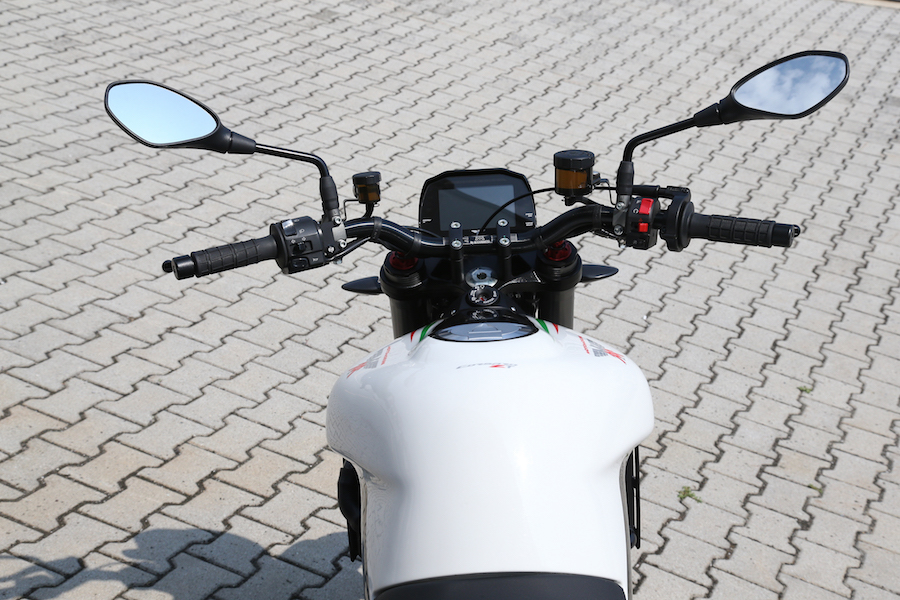
Test Alan Cathcart
Photography Kel Edge
Read the full story in AMCN Vol 68 No 05

